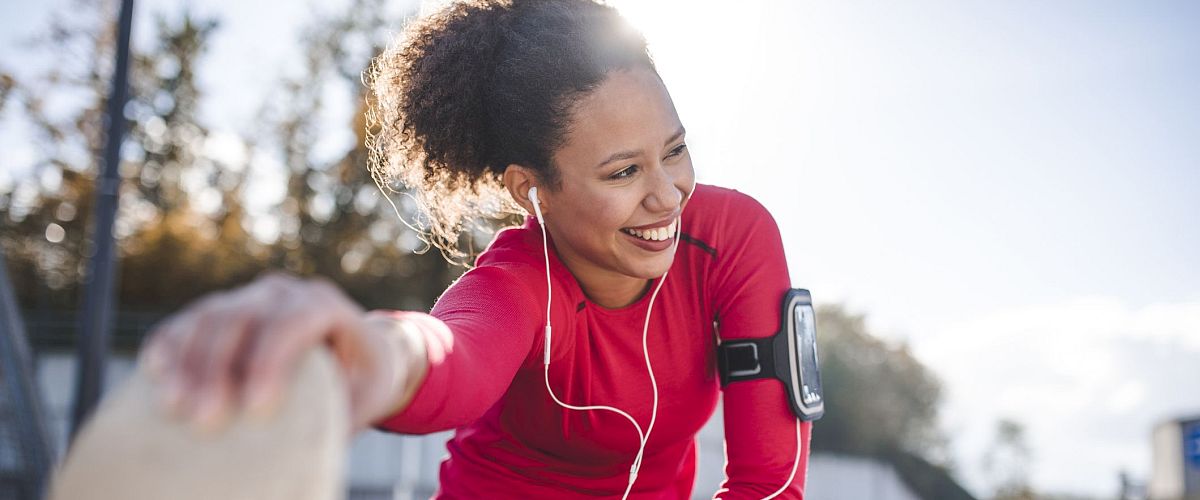From fitness buffs to health enthusiasts, most people don’t make the time to stretch. Those who do often only stretch when something aches. But experts say regular stretching can deliver all kinds of benefits—it should be a part of your daily routine. Stretching increases flexibility, range of motion, and blood flow to muscles.
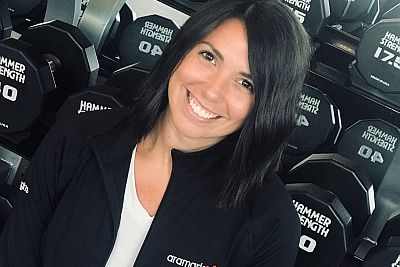
Meaghan Goga
Without regular stretching, muscles that are already tight from sitting or driving can get tighter and shorter. That reduces flexibility and range of motion in your joints, and it sets you up for injury. For example, sitting all day can tighten hamstrings, making it harder to extend your leg and walk with ease. Regular stretching is especially critical as we age—to keep us nimble, balanced, and living as independently as possible.
“Stretching is something that’s so easy to do, but we tend to want to get our workout in and be done with it,” says Meaghan Goga, an exercise physiologist who runs the Aramark wellness center as an employee of HealthFitness Corporation. “It will help you sustain and live a fuller and more active life by just incorporating a five to ten minute stretch routine into your day.”
Stretching can be simple to incorporate into your schedule. With Meaghan’s help, we’ve identified some common misperceptions about stretching and top tips on how to create the best stretching routine to keep you flexible and healthy.
Q: What are the health benefits of stretching?
When you stretch, you increase flexibility and improve range of motion in joints like your neck, shoulders, hips and knees. With greater range of motion comes ease in bending over to pick up a dropped object or reaching a cup in a top cabinet. Flexible muscles also help you hold the right posture while sitting and lift heavy objects in a way that avoids injury.
Stretching can even be good for your brain. It can increase your serotonin—the so-called “feel good” hormone—stabilizing mood and lowering stress. One study showed stretching exercises at work lowered anxiety and fatigue and increased mental health.
Q: Are there different kinds of stretching?
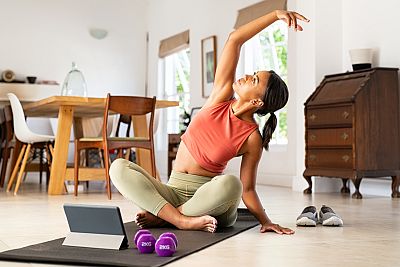 There are a few types, but the most important two to remember are dynamic and static. Dynamic stretching is a movement-based stretch. For example, a walking lunge or a heel-to-rear jog are dynamic stretches.
There are a few types, but the most important two to remember are dynamic and static. Dynamic stretching is a movement-based stretch. For example, a walking lunge or a heel-to-rear jog are dynamic stretches.
Dynamic stretching is a part of yoga, tai chi and Pilates. Static stretches, on the other hand, are passive. You get into a position and hold. A static stretch could be sitting with your legs in front of you and bending over your legs.
Meaghan recommends doing a dynamic stretch like arm circles to warm up the joints, followed by a cardio workout, then static stretches to round out your workout.
Q: When should I stretch?
Stretching can serve as a cooldown after exercise, but you can also stretch apart from a cardio workout. Either way, don’t stretch “cold,” says Meaghan, or without first warming up your muscles.
A warm-up could entail a few sets of jumping jacks, windmills, or high knees. Or you could jog or bike at low intensity for five- to ten-minutes.
Never consider stretching in and of itself as a warmup—stretching cold muscles could hurt them. Instead, when you get blood flowing to an area, the tissue is more pliable.
Meaghan prefers post-workout stretching when your muscles and joints are already activated. “The main thing is you want to make sure your muscles are warm and prepared.”
Q: How much should I stretch and how often to see benefits?
 Stretching should be part of your exercise routine, but whether it’s daily or three to four times a week is up to you and your schedule. Some experts believe daily is the best way, if possible. But if you know you won’t succeed by committing to a daily regimen, you’ll still see benefits from stretching a few times a week.
Stretching should be part of your exercise routine, but whether it’s daily or three to four times a week is up to you and your schedule. Some experts believe daily is the best way, if possible. But if you know you won’t succeed by committing to a daily regimen, you’ll still see benefits from stretching a few times a week.
Know, though, that results will take time—weeks, if not months. Make a plan about when you’re going to stretch, for how long and which muscles to help ensure you stick with it.
Meaghan suggests targeting three to five days a week for five minutes each day to start. Pick up to five muscle groups and hold stretches for as long as you like if it feels good, she says, though “30 to 60 seconds is usually that sweet spot.”
Q: Are there certain muscles to focus on when stretching?
Key muscles to stretch include those that are critical for mobility and balance such as your lower back muscles, hip flexors, hamstrings, quads, and then also your neck and shoulder muscles.
If you have certain muscles that are chronically tight, focus on those, Meaghan says. For example, if you can barely touch your toes, you may want to prioritize stretching your hamstring muscles.
You can also decide to stretch the muscles you worked out that day, she adds. Or, do a full body stretch every day if you have the time.
Q: What are some potential risks to watch out for when stretching?
 When stretching, you want to feel mild discomfort, not pain. If you feel any pain, ease up on the stretch.
When stretching, you want to feel mild discomfort, not pain. If you feel any pain, ease up on the stretch.
“It should be a feeling of good discomfort,” Meaghan says. “In other words, you might not like the feeling, but can tolerate it because you know it’s helping. But stretching should never be painful.”
You should also keep symmetry in mind while stretching so you’re in balance and not considerably more flexible on one side of your body than the other.
Q: Can assisted stretching be helpful?
Assisted stretching is when you have a partner or a tool like a yoga strap to help you get into a deeper stretch. “It can be great,” Meaghan says.
Good muscles to target during assisted stretching include major muscles and those in the lower body like the hamstrings or the quads.
Q: What about foam rolling after a workout?
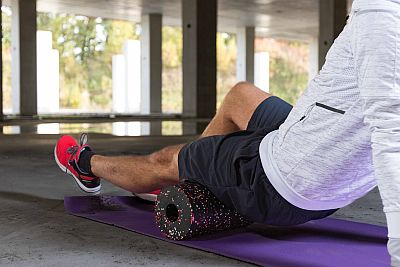 Foam rolling isn’t stretching, per say, but it can be great for your muscles. Foam rolling entails using a foam cylinder to roll out and release tight muscles.
Foam rolling isn’t stretching, per say, but it can be great for your muscles. Foam rolling entails using a foam cylinder to roll out and release tight muscles.
“If you have tight short muscles, definitely use that foam roller to help mobilize that area and loosen up the tightness and help lengthen that muscle,” Meaghan says. You can also use a tennis ball to release tight spots with a trigger point release.
For example, when you work at a desk behind a computer that causes the shoulders to round forward and the pectoral muscles to tighten and shorten. Using a tennis ball against the wall helps release the tight chest muscles and opens up the chest to improve breathing and reset our shoulders for increased posture.
To do this, hold the ball against a tight spot on your chest then push into and move against a wall to help release the muscle tension.
Q: With limited time, how can most people practically fit stretching into the schedule?
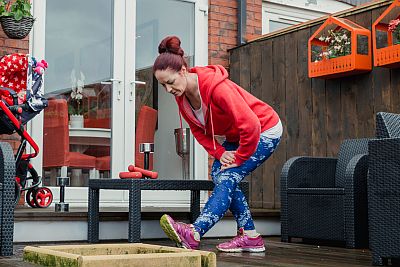 One hack for getting a routine to stick is to link it to something you already do without fail. If you watch a Netflix show every night, stretch while you watch your show. Some people like to stretch while listening to a podcast or use stretching as a reason to step away from the computer and take a five-minute work break.
One hack for getting a routine to stick is to link it to something you already do without fail. If you watch a Netflix show every night, stretch while you watch your show. Some people like to stretch while listening to a podcast or use stretching as a reason to step away from the computer and take a five-minute work break.
A physical therapist—your gym or health center may have one—can help you evaluate your muscles and create a personalized routine. There are also plenty of online stretching videos.
“You can give yourself five to ten minutes,” Meaghan says. Whatever you do, do something, she adds: “Everyone wants to live a long life and be able to perform activities of daily living, but if we don’t focus on the mobility piece as well as the flexibility piece, we’re not going to get there.”
Note: Since everyone’s health history and nutritional needs are so different, please make sure that you talk with your doctor and a registered dietitian to get advice about the diet and exercise plan that‘s right for you.

